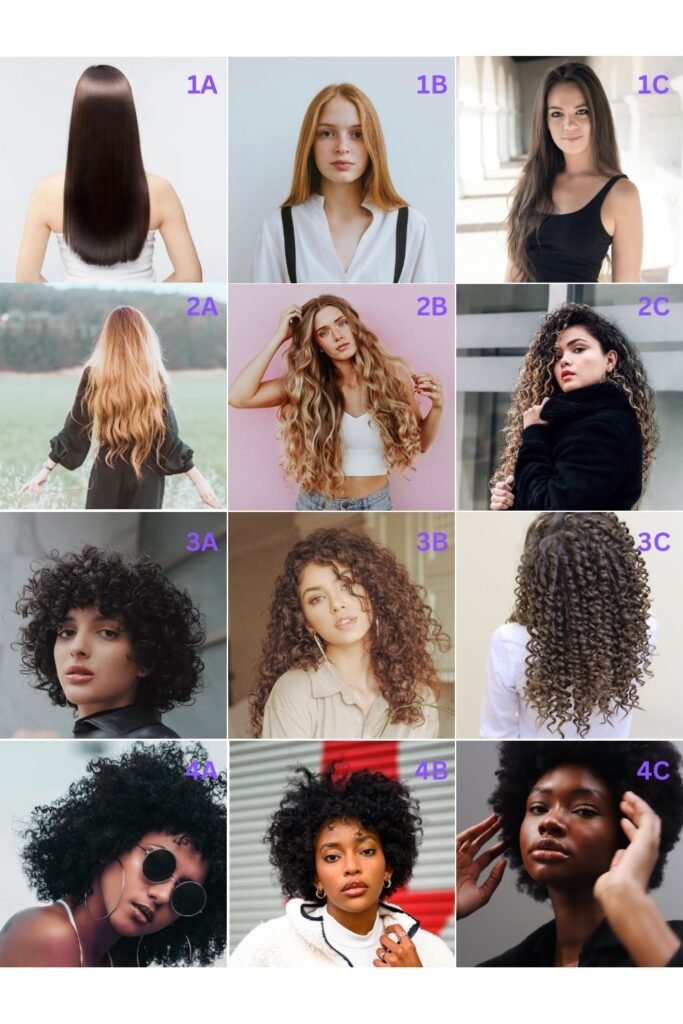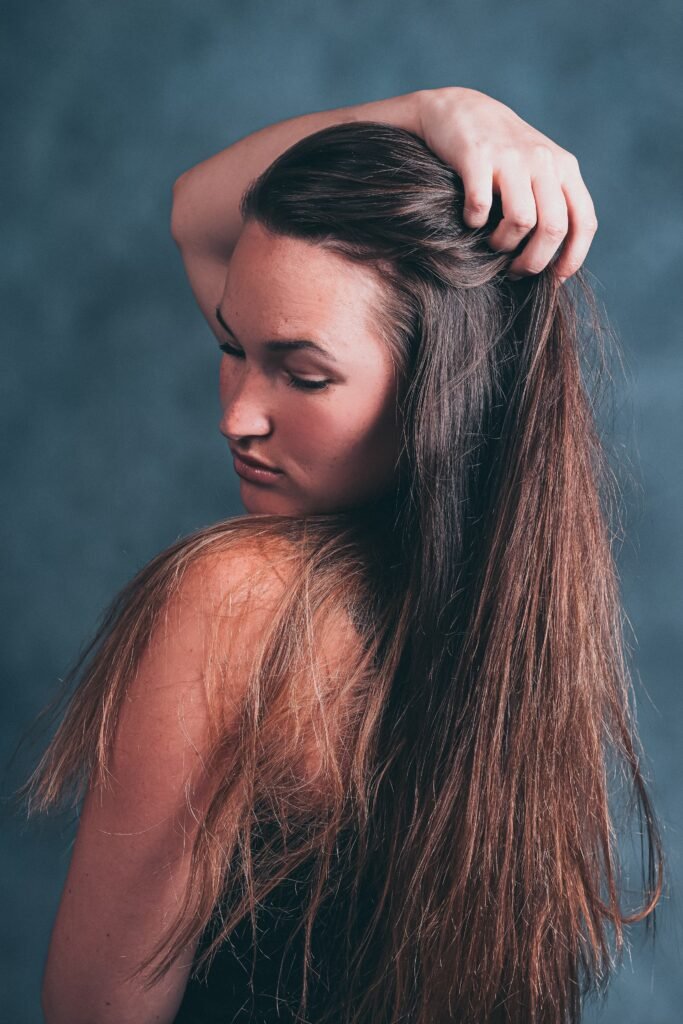You’ve probably heard the terms Type 1, Type 2C or 4A thrown around in hair tutorials or product reviews. Maybe you’ve even Googled your way into a spiral of curl charts, porosity tests, and contradictory advice. Figuring out your hair type can feel like solving a puzzle you didn’t know you signed up for. And yet, once you do understand it, everything starts to click. Products work better, your routine makes more sense, and your hair just looks and feels healthier.
In this guide, we’re going to break down what hair type really means, how to figure yours out, and what to do with that knowledge once you have it. No fluff, no jargon. Just facts, guidance, and a little bit of fun along the way.
Understanding Hair Type: It’s More Than Just Curly or Straight
Hair type is commonly categorized using a number system developed by stylist Andre Walker. This system breaks hair down into four main types: Type 1 (straight), Type 2 (wavy), Type 3 (curly), and Type 4 (coily), each with subcategories (A, B, and C) based on the tightness of the curl or wave.
If your hair dries with no bend or curl, it’s likely in the Type 1 category. Loose S-shaped waves? Probably Type 2. Defined curls that spring back when pulled? Hello, Type 3. And if your strands form tight coils or zig-zags, you’re likely working with Type 4. Simple enough, right? Not quite. Because most people don’t fit perfectly into one box.
For example, it’s completely normal to have 3B curls at the crown and 3C curls at the back, or to have straight roots with wavy ends. Hair is dynamic and rarely uniform, which is why understanding the broader picture, including your hair’s porosity, density, and texture, is so important.

Hair Density, Thickness, and Porosity: The Unsung Heroes
When most people talk about hair type, they think only of curl pattern. But things like porosity (how well your hair absorbs and retains moisture), density (how much hair you actually have on your head), and strand thickness (how fine or coarse each individual hair is) are just as crucial in determining what your hair needs. Let’s figure out what you have going on.
1. Hair Density
This refers to how much hair you have, not the thickness of each strand.
How to tell:
Look at your scalp in a mirror. If you can see a lot of scalp, you have low density. If you barely see it, your hair is dense.
Tip:
Volumizing products work well for low-density hair. Lightweight oils are best to avoid buildup.
2. Hair Strand Thickness
Your hair can be:
- Fine – strands barely visible or feel silky
- Medium – average, holds styles fairly well
- Coarse – thicker strands, more resistant to styling
Test it:
Roll a single strand between your fingers. If you can barely feel it, it’s fine. If it feels like thread, it’s coarse.
3. Hair Porosity
Porosity = how well your hair absorbs moisture.
Do the water test:
Drop a clean strand into a cup of water:
- Floats = low porosity
- Sinks slowly = normal porosity
- Sinks fast = high porosity
Tip:
- Low porosity? Use light, water-based products
- High porosity? Focus on sealing moisture with oils or protein-rich masks
Why does this matter? Because a heavy cream might be perfect for thick, high-porosity curls but too much for fine, low-porosity waves. Understanding these aspects of your hair helps you avoid product build-up, frizz, breakage, and the all-too-common trial-and-error spiral.
Let’s Talk Curl Patterns
Now that we’ve got the foundation, let’s dive deeper into curl patterns.
Type 1 (Straight hair) tends to be oily faster because sebum travels easily down the hair shaft. Type 1A is ultra-straight and fine, 1B has more body, and 1C is coarse and resistant to styling. Volumizing shampoos and lightweight products work best here. Think dry shampoos and root-lifting sprays.
Type 2 (Wavy hair) is where a slight S-shape begins to show. 2A is fine and loosely wavy, while 2B has more defined waves and a tendency toward frizz. 2C is thicker and often gets mistaken for curly hair. Waves benefit from curl creams and mousses that enhance texture without weighing hair down. Avoid heavy oils unless you’re sealing in moisture after washing.
Type 3 (Curly hair) is defined by springy curls that vary in size. 3A curls are loose and shiny, 3B curls are tighter with more volume, and 3C curls are densely packed with a corkscrew pattern. These hair types thrive on moisture, so leave-in conditioners, gels with a soft hold, and sulfate-free cleansers are your friends. Detangle in the shower with a wide-tooth comb and avoid brushing dry curls to reduce frizz.

Type 4 (Coily/kinky hair) features tight curls or zig-zag patterns. Type 4A curls are soft and defined, 4B curls are fluffy and less defined, and 4C curls are the tightest, often with shrinkage up to 70%. This type needs intense hydration and gentle handling. Use creamy leave-ins, natural oils like castor or avocado, and protective styles to minimize breakage. The LOC method (liquid, oil, cream) is especially helpful for sealing in moisture.
You can look at the image I’ve added for more clarity.
What Should You Actually Do With This Info?
Once you’ve identified your hair type and characteristics, the next step is crafting a routine that works with your hair, not against it. If you’re not sure where to begin, here’s a starter tip for each hair type:
- Straight: Use clarifying shampoo once a week to remove buildup and boost volume.
- Wavy: Scrunch in curl cream while hair is damp and air-dry for effortless texture.
- Curly: “Plop” with a microfiber towel and diffuse on low heat to define curls.
- Coily: Deep condition weekly and avoid heat tools unless necessary.
Most importantly, give your hair time to adjust. If you’ve been using the wrong products or styling techniques for years, it might take a few weeks for your hair to settle into its natural shape and rhythm.
Final Thoughts
Your hair doesn’t need to fit into a perfect category. You’re not required to identify as “3B low porosity medium density” to care for your hair well (though props to you if you do). What matters most is listening to your hair’s signals. Is it dry? Limp? Frizzy? Flat? Those are the real clues.
By understanding your hair’s unique makeup and being patient as you learn what works, you’re setting yourself up for less frustration and a lot more good hair days.


